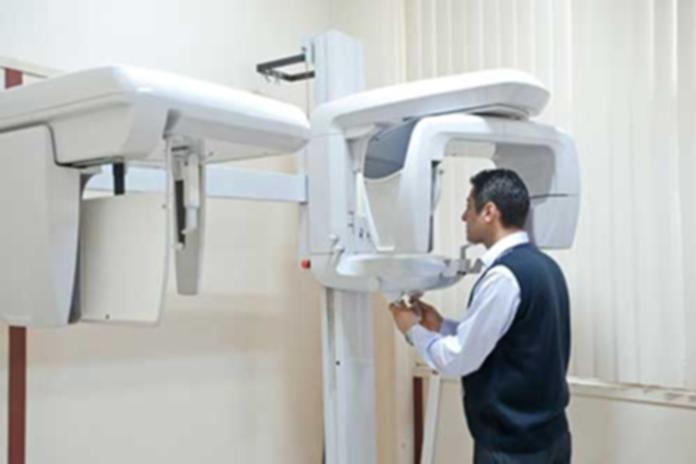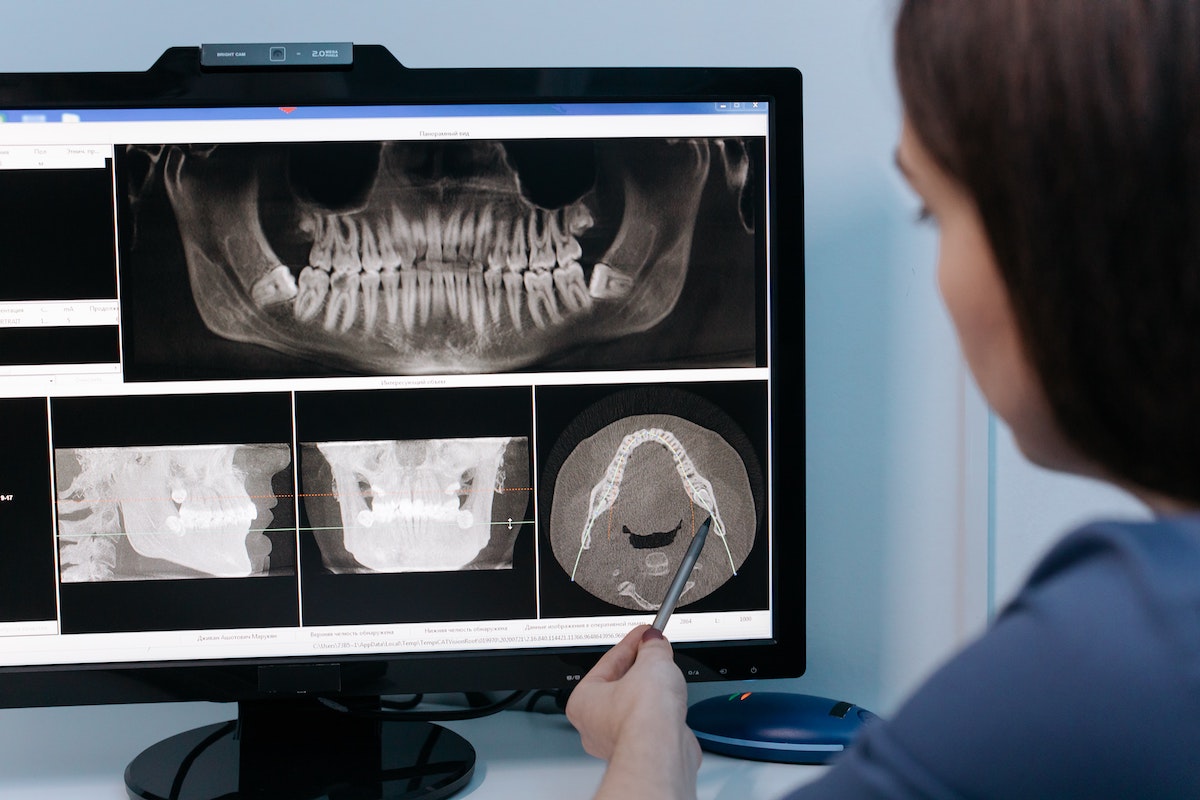Dental x-rays, also called radiographs, are a key diagnostic tool for dentists. Many people think x-rays are dangerous; but x-rays are among the safest and most reliable imaging technologies today.
Dentists and dental hygienists are trained in the safe use of x-rays in a dental office setting. For example, patient safety is maintained through:
- Using protective aprons and short exposure times.
- X-ray equipment that is licensed and inspected by state and local authorities.
- A level of radiation exposure that is less than most radioactive medical imaging technologies and natural sources.
- The procedure itself is quick and non-invasive.
Annual dental x-rays pose minimal risks and have real benefits for patients and dental professionals alike.
Dental X-Rays are a Key Tool
Dentists require radiographs to evaluate patients’ oral health. Radiographs are the images produced by x-rays, which are just low levels of radiation used to capture images of the mouth otherwise invisible to the naked eye. Dental professionals need to examine a patient’s entire mouth structure in order to make a well-informed diagnosis and treatment plan. X-rays are a non-invasive and painless way to do this. Dentists can catch problems early, before they become more painful and more expensive.
Radiographs are safe for adults and children. Dental professionals take care to limit radiation exposure in all their patients. Occasionally alternatives will be used, such as ultrasounds for pregnant women. There are other imaging technologies that a dentist can use, but x-rays are among the oldest and most trusted technologies. Most people will receive a set once each year, but particular factors such as age or history of gum disease could make more frequent x-rays necessary.
How Do X-Rays Work?

Radiographs use a short, concentrated burst of electromagnetic radiation to capture an image of bodily tissues. Medical professionals use x-rays to help diagnose conditions such as broken bones and cancer. Anyone who has had a medical x-ray will agree that the procedure is quick and painless, and rarely has any side effects. Dental x-rays are no different.
Dentists will use various types of dental x-rays depending on the patient’s needs. The most common are called bite-wings. These provide an image of teeth below the gumline. The dentist or dental hygienist can easily diagnose decay.
More specific issues may require different types of x-rays, such as occlusal or panoramic x-rays. Occlusal x-rays are images of the top and bottom of the mouth. These are commonly used by pediatric dentists to evaluate the growth and development of children’s mouths. Panoramic x-rays are like panoramic photos. They provide a complete image of the patient’s mouth. These can be helpful in examining a patient’s bite.
MRIs are used for many medical diagnoses because they show both bones and soft tissue. Dentists may also use MRIs to diagnose certain conditions such as temporomandibular joint (TMJ) syndrome. But this technology is more costly and can make patients feel claustrophobic. Recent advances in ultrasound technology have made them a good alternative, though x-rays are still better for imaging hard tissue such as teeth and bone.
What Makes Dental X-Rays Are Safe? Low Exposure
X-rays do use radiation, but the levels of radiation are so low that they are considered perfectly safe. Indeed, x-ray machines emit even less radiation than natural sources. The U.S. Nuclear Regulatory Commission (NRC) estimates that individuals are exposed to 620 millirems of radiation each year, with about half of this radiation coming from natural sources such as air and food, and the other half from man-made sources.
NRC guidelines state that adults can safely be exposed to 5,000 millirems of radiation a year. Children can safely be exposed to 500 millirems of radiation each year. Over time, individuals should not be exposed to more than 1,000 millirems of radiation times their age (so a 60-year-old person could have safely been exposed to 60,000 millirems over the course of her life). Dental x-rays fall well below this acceptable limit.
Medical x-rays account for most of the man-made radiation exposure each year, but dental x-rays account for the lowest radiation doses from these medical procedures. The NRC estimates the radiation dose of a full-body CT scan at 1,000 millirems. A dental x-ray dose is a mere 1.5 millirems. Considering that people on average consume 30 millirems of radiation in their food, x-rays expose patients to tiny amounts of radiation.
No medical procedures are completely without risk, but x-rays are among the safest. Today many dentists use digital x-rays rather than film to minimize risk even further.
Other Considerations

Dentists or dental hygienists place a lead apron over the patient’s chest which blocks most (90-95%) of the x-ray radiation. It is recommended that women who are pregnant should avoid x-rays, however, because they may not be safe for the developing fetus. Women should let their dentists know if they are pregnant or if they are planning to become pregnant. In these cases dentists may use an alternative imaging technology such as ultrasound.
Radiation exposure accumulates over time, so people should avoid excessive x-rays if possible. Annual dental x-rays are not dangerous. If a patient has a medical condition that requires frequent x-rays, they should notify their dentist.
The Food and Drug Administration publishes safety guidelines for x-ray operation. The technology is regulated by state and local authorities, and dentists must license their equipment and have it inspected annually.
X-Rays Remain the Best Diagnostic Tool for Dentists
While other imaging technologies have their uses, x-rays remain the best tool that dentists have to diagnose and evaluate their patients’ oral health.
X-rays pose very little risk but dental professionals are continually working to refine the tools used in the dental office to make them more safe and effective. Currently dentists are excited about 3D imaging technology that uses radiography to provide a more complete image of a patient’s mouth.
Whatever technologies dentists adopt, safety will continue to be of paramount importance. Dental x-rays remain the most efficient way to spot problems so they can be fixed promptly. If you still have concerns, you can talk to your dentist at your next checkup. If you don’t already have a dentist, use our online locator tool to find one near you.


